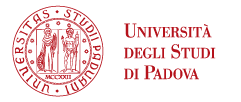Urban Planning
Dunia Mittner, dunia.mittner@unipd.it, 049/8275487
Sebastiano Roveroni, mail@sebastianoroveroni.it
Marco Stecca, architetto.stecca@gmail.com
Research areas:
New Towns
The Research explores new towns built since the beginning of the Twentieth century all over the world, as a relevant archive and a privileged observation lens in comparison with the Modern and Contemporary city. They are not so interesting for the particularity of being conceived as a unit, but for the conscious exploration of an urban dimension that is present in a wider number of examples. Given the extent of the observed field, the research is organized starting from the reasons underlying the foundation, geo-political, linked to industrial modernization, to the need to control urban growth, etc., in an attempt to distinguish them from the "rhetoric" often used to convey projects, which are especially eco and smart.
African city
The second research topic is aimed at the African context, which is today affected by the most intense phenomena of transformation and urbanization on a world scale. Large neighborhoods or entirely new cities are designed everywhere in the continent to respond to urban growth, industrial and technological modernization or to changed geo-political needs, drawing on consolidated or hybridized urban models and building different types of relations between the State and the private developers. The scale of the of the ongoing transformation represents a unique opportunity in order to compare with some of the most pressing contemporary issues, particularly the construction of a sustainable urban scenario.
Exemplary Master Plans/Nord European Urban Planning
A further research topic concerns some of the main establishing documents of modern urban planning, such as the General Expansion Plan for Amsterdam (AUP, 1935), the Greater London Plan (1944), the “Finger Plan” for Copenhagen (1947), the Generalplan for Stockholm (1952) and the role they played particularly within Nord-European urban planing. The research intends to explore the relation between general transformation drawings and implementation plans for large parts of cities, such as neighborhoods, open spaces on the scale of the new democratic city, setting up of a public commission for large architectural programs and to measure their actuality through the critical analysis of some recent urban planning documents.
Keywords: New Towns, African city, Exemplary Master Plans/Nord European Urban Planning





